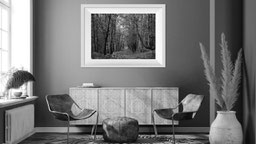
Written by Ylenia Cantello

Finding your own photographic style requires passion and a desire to get involved. Every human being is unique and inimitable. Ansel Adams said:
"Don't just take a picture with a camera.
You put in the picture all the images you saw,
the books you read, the music you heard,
and the people you loved "
A photograph is the set of everything you are. And all that you are is expressed in a photograph.
But sometimes it is not easy to listen to one's own voice and understand what one's natural talents make a style unique.
So I wanted to write six aspects to consider to bring out your personality and your photographic vision, to take photographs that talk about who you are and how you see the world.
Go beyond what the others make
True creativity comes from the desire to give voice to your personal vision.
It is easier to take the same photographs that everyone else takes when you are in the same place, rather than focusing on what you really want to photograph. The real challenge is to get out of the visual scheme you are used to following.
Then look for a place in the most photographed places, which can offer you fresh and original material in harmony with your way of being.
Do not imitate what others do by copying the composition and technique used.
Instead, choose a different point of view that can tell who you are, try to look for a detail or capture a flash, turning curiosity into the engine that drives you to experiment with new solutions.
Get in touch with what a place means to you, and take your photos from that personal perspective.
You will begin to notice that your photographs become thicker and become more and more significant.
To develop your visual skills you need to pay attention to the world around you, and you will see that everything you need to take a picture is already there.
From the corolla of a flower to the stars of the universe, nature is rich in subjects ready to be photographed.
Learn day by day to take part in all this wealth at a deeper level, you will see that you will grow as a person and as a photographer.
After all, learning to observe means learning more about yourself as you connect with the natural world.
Tip #1: go to a quiet place in the middle of nature (a meadow in the mountains, near a stream, by a lake, where you prefer), sit down and write down what you see and what emotions you feel emerging. Breathe deeply and let yourself be carried away by what the place tells you on an emotional level. Close your eyes for a while. Only then do you take your camera and start shooting, letting yourself be inspired by what is most interesting to you.
Show your passion
A photo is not born by simply pressing a button. As Yousuf Carsh said:
"Observe and think before you open the shutter.
The heart and the mind are the true lens of the camera "
The key to everything lies in being able to express what you feel when you make the photograph.
This happens naturally when you choose a subject that you are passionate about and let that passion penetrate into the camera. In fact, if you look at something with loving eyes you can see different aspects that others don't even imagine.
Once you have identified what interests you and how it makes you feel, you have the basis for all the actions and decisions you will make to create the photograph: you will choose the right equipment, the light, the composition, the perspective based on what you want to say.
So when you see a landscape that excites you, you can let yourself be guided by your feelings to create a photo that helps other people feel the same magic that captured you.
Nourish your creativity
There are so many people who think they are not creative. But this makes no sense.
Each of us has the seeds of creativity and those seeds only need to be cultivated.
As it happens in other fields of life, it is also important for landscape photography to keep fit.
It has now been shown that when you practice an activity that you like, those areas associated with creativity and pleasure expand in the brain.
I think the secret to making your seeds bear fruit is to keep taking pictures, perfecting your personal vision from day to day.
Always look for something new to photograph and make you happy while you do it.
Tip #2: to start with, try creating a photo project that includes taking a landscape photo a day. Feel free to express yourself, play with the camera settings and don't worry about the result. The important thing is you go out home and be inspired by nature.
Tip #3: always carry your camera with you because nature is full of surprises and you don't want to miss any opportunity to capture them!
Learn from your shots
After making several shots to find out what you like or dislike, what kind of look do you have (are you more descriptive or do you prefer an overview?). With which equipment do you feel more comfortable and, ultimately, what is your true style, it is now time to critically evaluate your photographs. Look at them carefully and try to understand which features satisfy you and which can be improved; if they are a step forward in your expressive growth process and help you better define your photographic personality.
Make the most of every image that helps you learn more about your style, but discard without regret the photos that do not add value to your creative vision and that are the bad copy of other shots.
Tip #4: if you don't like most of the photos, don't be discouraged but turn this sense of defeat into a new push to get to know you better. Even the greatest photographers have archives full of unsuccessful photos: without them, however, they would never have become the famous names we know!
Delve deeper and learn from the professionals
In photography we must not stop learning. For this you read books and magazines specialized in landscape photography, monographs of photographers, search articles and videos on the internet. But above all, you have experience in the field with a professional photographer. This is indeed a precious opportunity to improve your skills, ask questions and solve the knots that still prevent you from fully expressing your photographic style.
Have a good time!
Finally, enjoy the moment in which you photograph nature!





